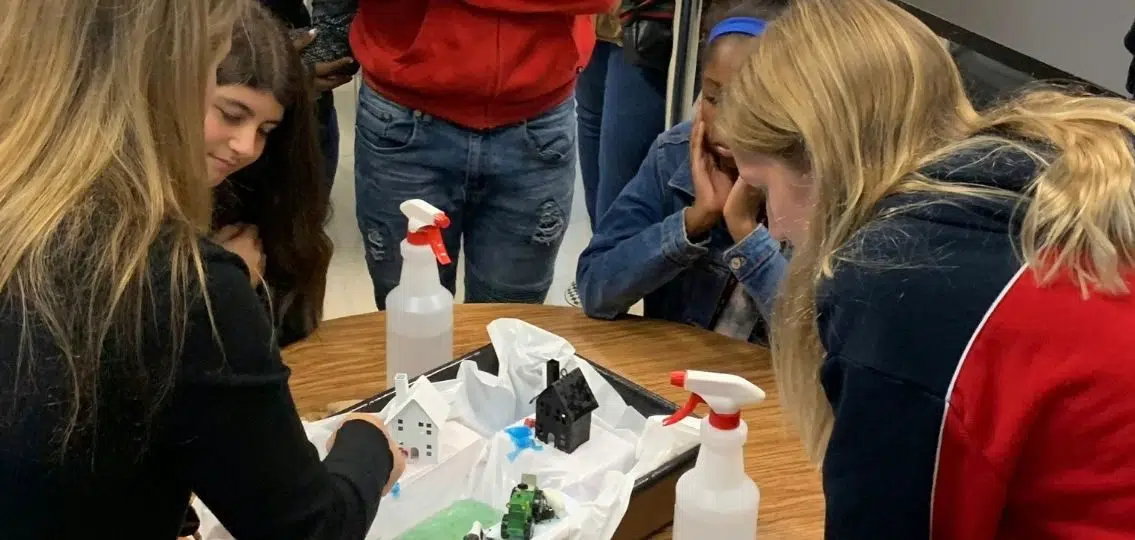With the start of my daughter’s 7th grade year came a curious comment. “There are hardly any girls in my math class,” she said. It was an accelerated class, and I had noticed the same situation when my son took the same class a few years earlier.
I was frustrated. My daughter enjoys math and science—yet the classroom environment seemed to be telling her this wasn’t the place for her. Two of her friends had been in the class the year before but dropped down to a less rigorous one. It seemed likely that if she followed a path where she could take accelerated science, technology, engineering, and math (STEM) classes, she’d be doing it without her friends. Would this derail her?
“Not having that support network in a class can be hard on teens,” says Beachwood High School science teacher Lisa Bugenske. “Especially when you get to the high school level, where you can more freely choose which classes you take, friends can influence decision making.”
National Trends on Girls in STEM
According to the national organization Women in STEM, the gender disparity in STEM fields is widely recognized, but few initiatives are targeted at a young enough age for girls to decide what they want to pursue. The Society of Women engineers reports that only 13% of engineers are women and only about 19% of bachelor’s degrees in engineering and computer science are awarded to women.
| [adrotate banner=”234″] |
“When I ask my female students what they want to be when they get older, many say things that aren’t science or math related,” says Beachwood Middle School seventh-grade science teacher Alise Kulbago. “The boys typically say, ‘I want to be an engineer.’” The numbers back this up: a 2019 Harvard University study by Tessa Charlesworth found that by the time students reach middle school, more than twice as many boys as girls intend to work in science or engineering related jobs. This disparity can persist at the high school level; Bugenske reports that while there are more girls than boys currently enrolled in her school’s AP Biology and AP Chemistry classes, females are underrepresented in her AP Physics class.
Several of Bugenske’s female students noticed this as well. Three years ago, they started their own chapter of Women in STEM, which is committed to introducing girls to STEM at an early age. “For my students, it was about creating a network of support that they felt they missed out on. Now they visit our middle school and talk with students about STEM classes. Their experience was, ‘In eighth grade, we didn’t even know this was a path we could pursue.’ They’re working to overcome that.”
Positive Peer Pressure Helps
Kulbago advises her school’s Science Olympiad team and has seen how peer interactions can raise interest. “This is one area where female participation has been higher. People want their friends involved, and interest grows. They make it open and welcoming, and that makes a big difference.”
It’s stories like these that prove the point: Representation and support matter. Building a network—through clubs, mentoring, or even parent encouragement—can help bridge the divide with middle school girls.
Sticking it Out
So how much should parents encourage their children to stick with STEM interests if friends take different paths? “It really depends on the student and how much confidence she has. If she is interested in a STEM career, parents can be supportive and listening, and that goes a long way,” says Bugenske. She speaks from experience: A former engineer herself, both of her daughters work in the field.
“It helps if parents have open conversations with their daughter. Saying, ‘You can take these classes, it’s okay. It’s not for everybody but it is for you.’ Just having someone to talk to can show students that there is a place for them in the world of STEM despite peer pressure that says otherwise,” says Kulbago.




